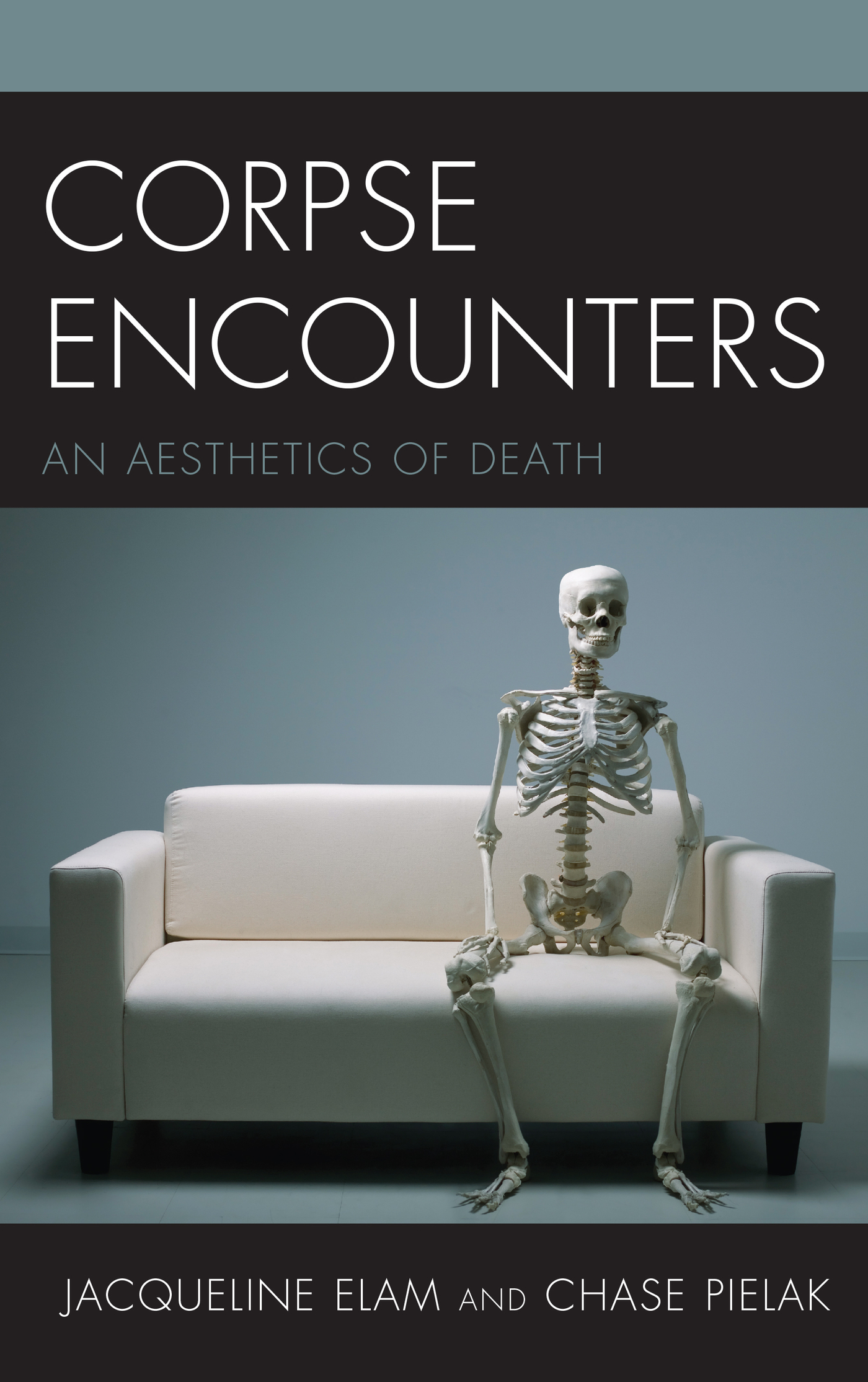Corpse Encounters
Corpse Encounters
An Aesthetics of Death
Jacqueline Elam and Chase Pielak
LEXINGTON BOOKS
Lanham Boulder New York London
Published by Lexington Books
An imprint of The Rowman & Littlefield Publishing Group, Inc.
4501 Forbes Boulevard, Suite 200, Lanham, Maryland 20706
www.rowman.com
Unit A, Whitacre Mews, 26-34 Stannary Street, London SE11 4AB
Copyright 2018 by The Rowman & Littlefield Publishing Group, Inc.
All rights reserved. No part of this book may be reproduced in any form or by any electronic or mechanical means, including information storage and retrieval systems, without written permission from the publisher, except by a reviewer who may quote passages in a review.
British Library Cataloguing in Publication Information Available
Library of Congress Cataloging-in-Publication Data
Library of Congress Control Number: 2018946075
ISBN 978-1-4985-4393-4 (cloth : alk. paper)
ISBN 978-1-4985-4394-1 (electronic)
 TM The paper used in this publication meets the minimum requirements of American National Standard for Information Sciences Permanence of Paper for Printed Library Materials, ANSI/NISO Z39.48-1992.
TM The paper used in this publication meets the minimum requirements of American National Standard for Information Sciences Permanence of Paper for Printed Library Materials, ANSI/NISO Z39.48-1992.
Printed in the United States of America
Acknowledgments
With heartfelt thanks to Mike Bryant, Claremont Graduate University, Chris Daley, Jack & Jenny Elam, Lori Anne Ferrell, Dean Fisher, Jennifer Friedlander, Nick Johns, Elisabeth Keijzer, Henry Krips, Alex Mack, Gary OBrien, Beverly ONeill, Mark Paloutzian, Isaiah, Kira, Nathaniel & Isaac Pielak, Lindsey Porambo, Mary Proenza, Promessa, Stephen Ryan, Max Schott, Joe Sehee, Aidan, Sara, Sam & Katherine Schutte, Katrina Spade, Jevon Truesdale, UT Knoxvilles Forensic Anthropology Center, Diana Wagman, Writing Workshops Los Angeles Nonfiction III Group, and the many others who supported this project. Special thanks to Marc Redfield.
Excerpts from The Loved One: An Anglo-American Tragedy by Evelyn Waugh, copyright 1948 by Evelyn Waugh, renewed 1976 by Auberon Waugh, reproduced by permission of Little, Brown and Company.
Approximately one thousand five hundred (1,500) words from The Loved One by Evelyn Waugh (Chapman and Hall 1948, Penguin Books 1951, Penguin Classics 2000). Copyright 1948 by Evelyn Waugh.
Excerpts from Three Novels by Samuel Beckett, English translation copyright 1955 by the Estate of Patrick Bowles and the Estate of Samuel Beckett. Used by permission of Grove/Atlantic, Inc. Any third party use of this material, outside of this publication, is prohibited.
Introduction
Representing the Dead
We are mortal, formed of the earth, and to earth shall we return.
The Book of Common Prayer teaches us that corpses are mutablethey are neither subjects proper nor representationsthey are waiting clay. Corpses represent a return from whence we came, but one that is nevertheless shrouded in performative meaning. The locus of this meaning resides in both the viewer and the corpse itself. We seek, with this in mind, to return the body to the center stage as a visible site of meaning, focusing primarily on the deceased body and only secondarily on its effects on the living body. For a time, at least, corpses exist as both presentation and representation, signifier and signified. This is, then, a book about corpses, the physical material of the dead body and its aesthetic presentation. To the extent that aesthetics must necessarily concern itself with representations, outside the object itself, this book considers also the corpses reimagination in a variety of contexts. With a note of pragmatism in mind, we also work to redefine what it means to care for corpses.
In the variety of disposition practices and accompanying aesthetic preparations that await the deceased, there is a dual gesture toward responsibility, for the living and for the dead. The nature of responsibility becomes clear in after-life arrangements, informing the longstanding discussion of the nature of the human through a careful consideration of its remainder. This is, in part, a reshaping of ideas about the corpse through exposure and in response to prevailing ideology and the ritualized systems that attend to the living and the dead. As we engage this discussion, the implicit thread of Eurocentrism, imported wordlessly through our philosophical training, affects our thinking, though we hope not to the exclusion of other approaches to death.
Timothy Secret cautions against the philosophical approach to death as if it were singular, and its corresponding revelations about lifegood lifesimilarly singular. To pretend as if there were a singular good life and good death is unrealistic and unnecessary. Nevertheless, there is a common product of death that we all experience and to some extent become, regardless of philosophical tradition or religious belief. Again, the corpse is the starting point of this text, rather than the more philosophical problem of death itself. The corpse, in all its singular horror and glory, shapes this discourse. Practices surrounding its disposition certainly engage the philosophical and psychoanalytic discourses fomenting since at least Socrates.
Abrahamic inheritance aside, we seek the possibility of a secondary processing, of processing the processes of death. However, in an attempt to inform practices of coming to terms with the dead, we hope to arrive at the pre-cultural place Secret identifies as inhabited by three considerations: ones own dying, the others dying, and the others being dead. There is no hope for an exhaustion of either the dead or death. Instead, the arc of this texts argument does not follow the trajectory of these three certainties. We follow processes of processing, observing both dissolution of corpses and representational narratives, through various means, ever with the expectation that in prodding conceptions of life and death we will loose the bonds and bounds of control of the dead and therefore death, reimagining a subjectivity of the dead and the living.
Even as we attend to the physical bodies, there are undeniable linguistic and ideological ruptures that open around the dead. We identify attempts to fill the yawning gaps left by these ruptures and knit together the fantasies surrounding bodies. As interesting, this text traces the becoming of corpses from apparently empty signifiers toward repatriation in the symbolic order. Corpses must not necessarily demand an abject turning away; they offer, instead, a chance to reimagine our own relationship to the symbolic order through aesthetic arrangement after life. This supposition of transcendence, of meaning after life, of a sort of staying power, treats the corpse as something between the living and the dead. The body retains something meaningful.
In a scientific sense, of course, bodies remain irreplaceably singular. Unique genetic composition ensures that a corpse retains at least this marker of self until its dissolution. Neither life nor death bounds this singularity. It is finally the processes of dissolution or preservation (as in the case of plastination) that determine either the extension or the cessation of relative subjectivity. Meaning certainly prevails. Rather than processes threatening the dignity of the body, against which Steven Miller rails, these are instead imagined to restore dignity. This restoration is, however, misplaced if the remaining subjectivity is rather for the dead than the living. Dignity no longer applies. If for the living, then as its etymology suggests, dignity must indeed be a measure of worth, inevitably, even categorically operating within the symbolic system of commodification.
Next page
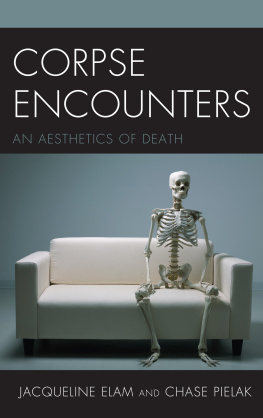
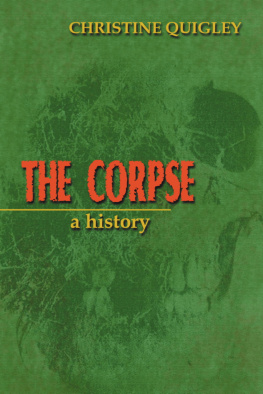




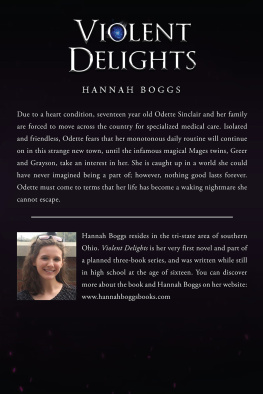
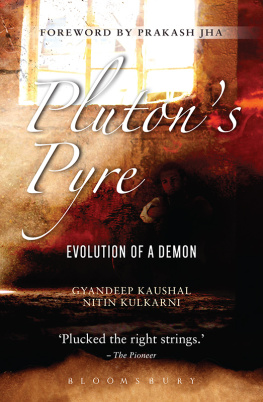
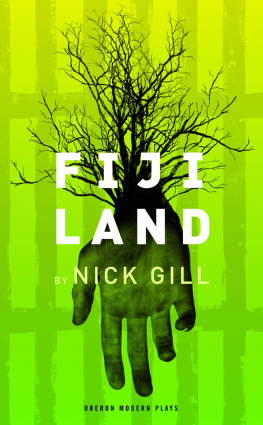
 TM The paper used in this publication meets the minimum requirements of American National Standard for Information Sciences Permanence of Paper for Printed Library Materials, ANSI/NISO Z39.48-1992.
TM The paper used in this publication meets the minimum requirements of American National Standard for Information Sciences Permanence of Paper for Printed Library Materials, ANSI/NISO Z39.48-1992.